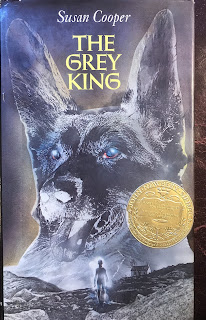I don't know where this story begins, whether at the middle, the beginning or end or even who the heroine or hero might be.
 |
| 1911 fifth grade, Mrs. Donnelly teacher, Eastside School/Jefferson Elementary. |
I do know that for over three decades I have been collecting stories from students and teachers who went to Jefferson Elementary school in Norman, Ok. Our location is the original landsite school for Norman. The doors of Eastside school (1-12) opened in 1894 years before statehood.
Of the one-hundred and fifty stories we have collected one stream flows throughout. Students recall when a teacher said or did something that made a difference in their lives. It may have been an art teacher who shared her paints and personal brushes with a girl who showed talent, a music/drama teacher who helped students stand in public and speak or sing, all school plays and programs that let the students shine, archeology digs, a story of failure in a grade only to be uplifted the next year by a teacher who understood him or her. Very few recall learning specific skills but they do recall the difference the ability to read, write, compute math, compromise, make friends, and understand how to problem solve made a difference in their lives.
Some even recall the memorizing "prepositions" in order: aboard, about, above, across, after, against......Over those first hundred years at Jefferson students memory work came full circle--memorizing Bible verses and poetry, to the Fifty Nifty United States through music, dance, and drama or times tables by flash cards. Oh, my!
Out of nowhere we may recall "The fog comes on little cat feet. It sits looking over harbor and city on silent haunches and then moves on." Thank you Carl Sandburg.
I joined the staff at Jefferson Elementary in 1978, and recall enough stories from working there until 1995 to fill a
book, but it is the lessons I learned that come back to me most often.
I had already worked two years in a public library and three years as a school librarian in Greensburg, Kansas before moving to Norman in 1978. With a master’s degree in hand and five years’ experience, I thought I knew something.
Our library was the hallway in the 1958 blonde brick
building with two bathrooms on the west end, ten sinks for each classroom, the
heating units and water pipes ran under the library creating three steps down
to each classroom. On the floor in the hallway there were heavy steel cellar
doors that could be lifted by two people, so students could step down in the
hallway basement/cellar for shelter. It was dark and smelly under that hallway
and most likely not even safe in a storm.
 |
| Audio Visual equipment being used in the library..1979. Molly O'Dea, John Satterlee, and Wes Hall. Behind Molly are the steps down to the classroom. |
The two ceiling to floor bookcases acted as walls between the classroom and library hallway and as shelving for books. There was no AC, but we did have windows and doors. On the East end a thin wall divided the library and entrance office for the secretary.
Suddenly, I found myself in the center of the best learning experience of my life. I knew what every teacher was teaching, and could easily help them with various topics and studies. It was a two way street, as I learned. My strength came from my love of literature, and teaching children how to travel through time in books. Using storytelling and puppets opened doors for many of the children’s imagination.
So imagine my surprise when on a winter day a first grade
teacher marched up the steps and stood in front of my desk. “Mrs. Rains, a
young boy in my class who cannot read at first grade level keeps checking out
books for older boys and girls. You mustn’t let this happen.” I nodded and took
the book.
The next day, I presented a plan, "Mrs. Searcey, if you
would allow Floyd to check out one book of his choice and one book on grade level
would that be sufficient?”
Frances didn’t smile, but nodded saying, “We will see how
that goes.”
Not long afterwards Floyd checked out a fantasy book that had won the Newbery Award for excellence in children’s literature, along with a large print reader on fist grade level.
It was the second or third time he had
checked out that book. Later that week, I walked down the steps to his room and
peered over his shoulders as he read and mumbled to himself. All along Mrs.
Searcey kept her eye on us. “Floyd,” I asked, “would you show me or tell me
what you are reading?”
Floyd looked up at me stoically and replied, “Don’t you
remember this book you told the kids to read? It has a medal on it, and it is
about a dog.”
“True,” I smiled while recalling that I had mentioned that book last November
to the fifth graders, and that his desk must have been right behind the divider
I put up to make a reading corner in the library. He had heard me talk about it
and had seen it on the poster. “Isn’t it hard to read?” I asked. “No,” he
replied. Then he opened the book and using his index finger he read every Dolch
sight word on the page and the next page. I was humbled and nearly cried.
Floyd loved that book and I only hope that one day by fifth
grade he was able to read and enjoy every word in it.
After school I explained what had happened. Frances looked at
me rather solemnly then smiled ever so slowly, “I think Floyd taught us both a
lesson today.”



.JPG)
